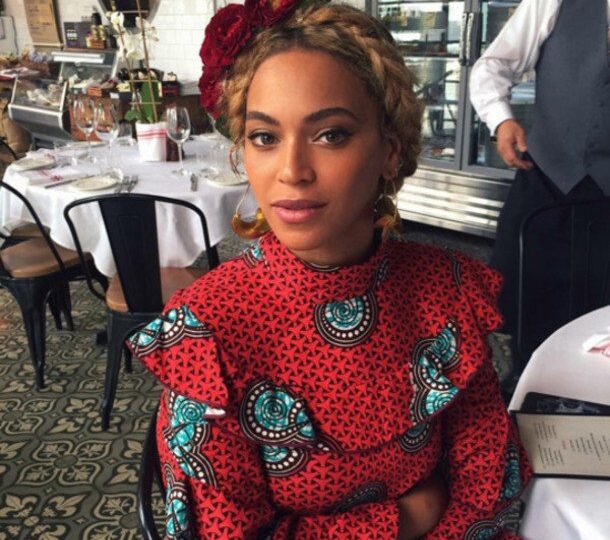In recent years, African fashion has taken center stage in the global fashion industry. From the bold Ankara prints seen on red carpets to African-inspired pieces in high-end designer collections, the continent’s fashion scene is not only gaining global recognition—it’s changing the narrative of what fashion means. African designers, models, and creatives are bringing their culture, stories, and craftsmanship to the world stage, redefining trends while celebrating heritage.
But this movement is more than just aesthetics; it’s deeply rooted in history, culture, and identity. The rise of African fashion is about reclaiming narratives, creating opportunities, and building a sustainable industry driven by Africans themselves.
In this article, we’ll dive into the origins of African fashion, explore its evolution, and highlight the pioneers, trends, and social impact that make it a powerful global force today.
The Roots: A Rich Tapestry of Culture and Craft
African fashion isn’t new—it’s as old as the continent itself. For centuries, African communities have expressed identity, status, and beliefs through clothing, jewelry, and hairstyles.
Traditional Textiles and Techniques
Each region has its own unique textiles, methods, and meanings. West Africa boasts rich fabrics like:
- Kente (Ghana) – A woven cloth traditionally worn by royalty, rich with symbolic patterns and colors.
- Akwaette (Nigeria) – A handwoven fabric worn during weddings and ceremonies.
- Bogolanfini or Mud Cloth (Mali) – A traditional handmade Malian cotton fabric dyed with fermented mud.
These textiles are not just decorative—they tell stories. The colors, symbols, and patterns reflect beliefs, social status, family history, and even resistance movements.
Cultural Identity Through Dress
In Africa, fashion has always been a form of cultural expression. From the regal robes of the Yoruba Obas to the vibrant beadwork of the Maasai, clothing carries deep meaning. Today’s fashion designers are tapping into these roots, blending traditional elements with contemporary style to create something uniquely African and proudly modern.
The Evolution: From Local Markets to Global Runways
African Fashion Goes Global
While African fashion has always thrived locally, the 21st century brought a wave of global interest. Diaspora communities, social media, and increased access to international platforms allowed African designers to showcase their work to the world.
Celebrities like Beyoncé, Rihanna, and Lupita Nyong’o have proudly worn African designs, bringing massive attention to the artistry behind them. Runway shows in Lagos, Johannesburg, Accra, and Dakar are now global events, attracting international buyers and fashion editors.
The Rise of African Fashion Weeks
Fashion weeks across the continent—such as Lagos Fashion Week, South African Fashion Week, and Ghana Fashion and Design Week—have become launchpads for African talent. These platforms provide designers with visibility and help build an ecosystem where creativity meets commerce.
Key Designers and Labels Making Waves
Africa’s fashion scene is bursting with talent. Let’s spotlight some of the trailblazers who are shaping the future of fashion on the continent and beyond.
- Ugo Monye (Nigeria): Known for her unique way of incorporating traditional West African fabrics into modern silhouettes.
- Thebe Magugu (South Africa): Winner of the 2019 LVMH Prize, his work blends storytelling with high fashion.
- Maxhosa Africa (South Africa): A brand by Laduma Ngxokolo that celebrates Xhosa heritage through knitwear and bold geometric designs.
- Imane Ayissi (Cameroon): The first Sub-Saharan African designer to showcase at Paris Haute Couture Week.
These creatives are not just designing clothes—they are challenging stereotypes, celebrating African heritage, and building brands that resonate globally.
More Than Style: The Power of Fashion to Tell Stories
African fashion is more than just trend-setting—it’s storytelling.
Fashion as Resistance
Throughout history, clothing has been used as a form of resistance in Africa. During colonial rule, Africans used dress to assert identity and pride. Today, wearing African fashion can still be an act of defiance—a statement against cultural erasure, a rejection of Western norms, and a celebration of self.
Reclaiming Narratives
For too long, Africa was portrayed through a narrow, often negative lens. But through fashion, Africans are reclaiming their stories. They are showing that the continent is not just one thing—it’s diverse, creative, sophisticated, and full of innovation.
The Business of Fashion: A Booming Industry
A Growing Economic Sector
According to the African Development Bank, the textile and fashion industry in Africa could be worth $15.5 billion over the next five years. The industry is creating jobs, stimulating local economies, and encouraging entrepreneurship, especially among young people and women.
Made in Africa
There’s a growing movement toward locally produced fashion. Designers are working with local artisans, weavers, and tailors to keep the entire supply chain within the continent. This helps preserve traditional techniques and ensure that profits stay in African communities.
Sustainability in African Fashion
African fashion is inherently sustainable. Long before “eco-friendly” became a buzzword, African artisans were practicing zero-waste production, recycling materials, and creating long-lasting garments.
Upcycling and Ethical Practices
Many designers are upcycling secondhand clothes or using plant-based dyes and organic cotton. Brands like NKWO (Nigeria) and IAMISIGO (Ghana/Nigeria) focus on slow fashion—prioritizing craftsmanship, fair labor, and sustainability.
This approach not only appeals to conscious consumers but also aligns with Africa’s heritage of resourcefulness and environmental respect.
The Role of Social Media and Digital Platforms
Social media has been a powerful tool for African fashion. Platforms like Instagram, TikTok, and YouTube have allowed designers, models, stylists, and influencers to bypass traditional gatekeepers and reach a global audience.
Fashion Influencers and Bloggers
Influencers like Sarah Langa, Denola Grey, and Toni Tones are setting trends and building brands online. They showcase African designers, style tips, and cultural content that connects deeply with local and global audiences.
E-commerce and Global Reach
Online marketplaces like Afrikrea, AnkaraMall, and Zando have made African fashion accessible worldwide. Now, anyone from New York to Nairobi can shop for authentic African fashion with a few clicks.
The Future of African Fashion
The rise of African fashion is not a passing trend—it’s a movement. The next generation of designers, entrepreneurs, and creatives are not only reimagining fashion but also redefining African identity.
Tech Integration
From digital fashion shows to virtual try-ons, technology is becoming a key part of Africa’s fashion future. As internet access expands, more designers will leverage digital tools to innovate and grow.
Cross-Cultural Collaborations
Collaborations between African designers and international brands are creating exciting fusions. These partnerships promote cross-cultural exchange while putting African fashion on bigger platforms.
African fashion is bold, beautiful, and unapologetically proud. It’s not just about clothes—it’s about heritage, creativity, resilience, and vision. As more people embrace the richness of African design, the world is finally recognizing what Africans have always known: that the continent is a powerhouse of style, innovation, and inspiration.
At Afriker.com, we’re passionate about telling these stories—highlighting the designers, movements, and milestones shaping Africa’s fashion future. Whether you’re a fashion lover, a proud African, or simply curious about the continent’s cultural renaissance, you’re part of this journey.

